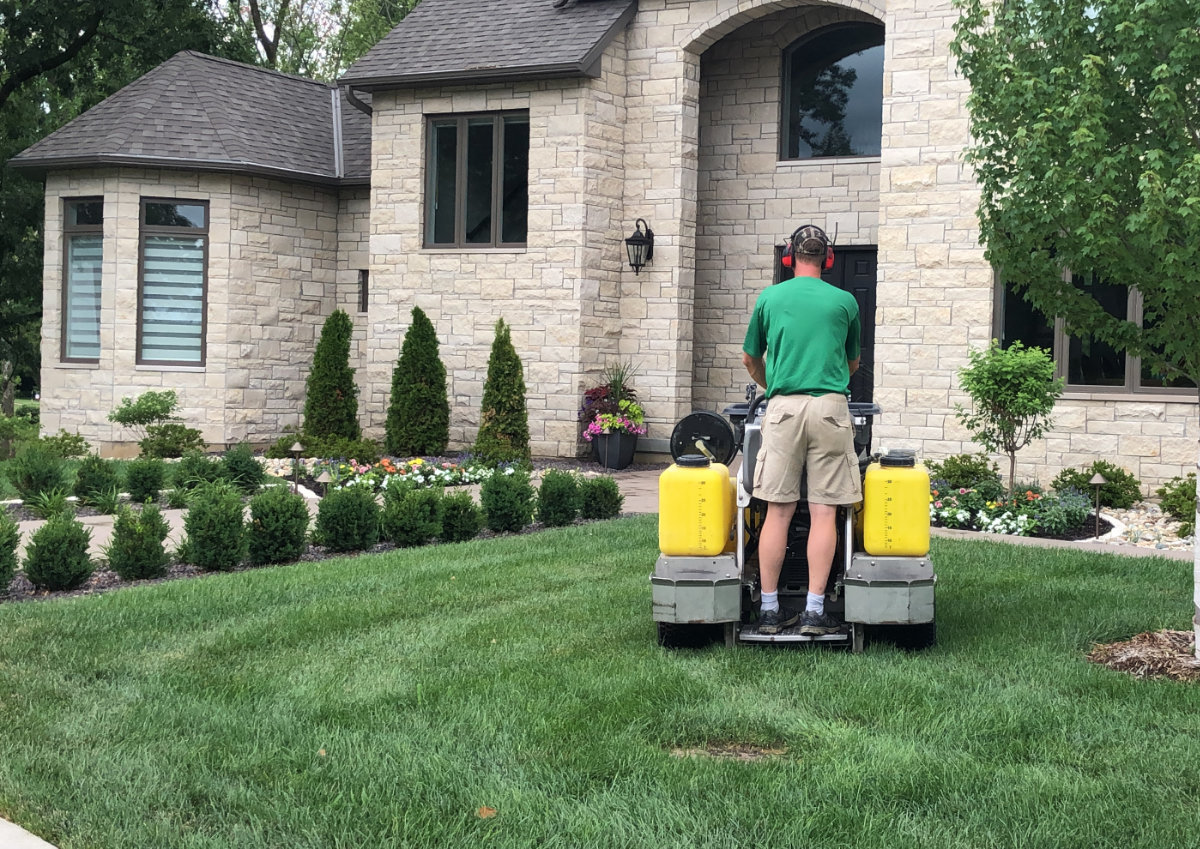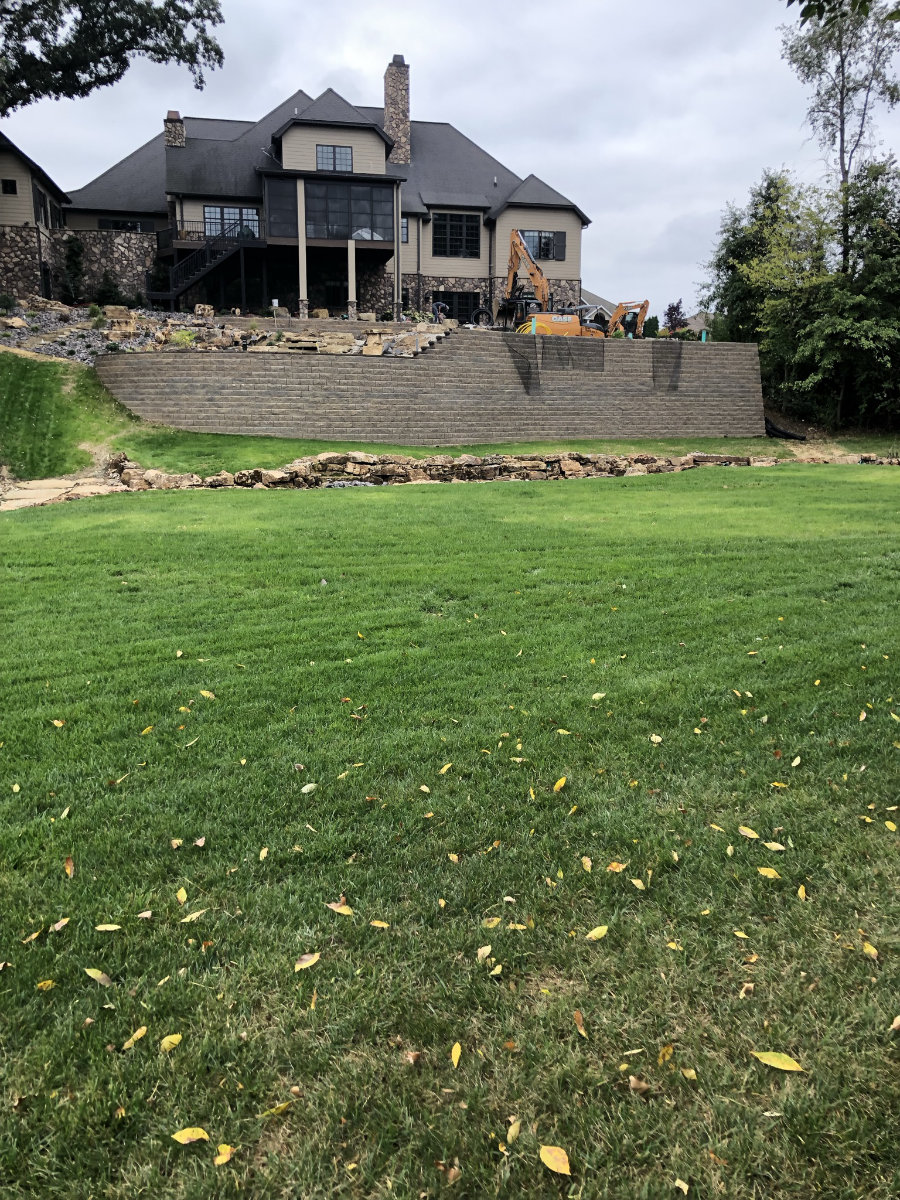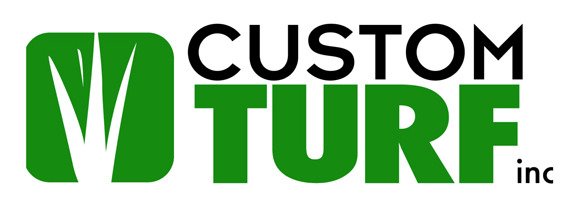Why apply winter fertilizer?
This application is one of the most important. A heavy rate of fertilizer is applied to ensure an earlier spring green-up. This application will help develop root structures throughout the winter months, thereby improving plant vigor.
Cool-season lawns should be fertilized in fall, when temperatures are cooling off but when the grass is still growing. Fertilizing in fall, will help grass plants keep their green color into the winter.

Grateful for this team making my lawn healthier! They are friendly & professional, on-time & responsive to our needs.
Heather
Last Application of the Year is Important
This last turf application of the year will provide your lawn with a late-fall feeding. As no one likes going to bed hungry, the same applies to your turf as well. Your lawn consumes many more nutrients in the fall than during the rest of the year. That’s because your turf is going through a natural process of preparing for the winter season. At this time, top growth slows down and may stop altogether, and your grass plants no longer need to continue sending nutrients and water to their leaves.
Instead, your lawn is now focusing on two things: expanding its root system, and filling that root system with converted nutrients to be used next spring. Your lawn will undergo this process naturally every fall, but providing this heavy dose of fertilizer will make it much more effective. This will lead to fatter and healthier roots for better spring growth.
Converting fertilizer into food
There is always a delay between the application of fertilizer and the first signs of change in color and growth. This is because your grass plants must first convert the nutrients in fertilizer into usable food. They’ll spend their energy doing this throughout the fall and winter. That way, when spring arrives, they’ll have a strong foundation upon which to grow. In addition to better green-up in the spring, heavy fall feeding will result in increased resistance to cool-weather fungus diseases by improving overall plant health. You may also notice improved color over the winter since well-fed grass will have an easier time retaining moisture. This will make it harder for cold winter winds to dry out your grass blades, turning them brown. Remember, fall is for fertilization. And with this application, you are treating your lawn to a nice, big dinner before winter arrives!

Fall Checklist
Leaves are changing colors, days are becoming shorter, and the air is turning cooler, signaling the arrival of fall. However, with the arrival of this new season comes a list that Custom Turf has compiled that will help to ensure a healthy lawn during the winter and spring months.
- Rake leaves before it snows, because when the leaves become trapped underneath snowfall, dead patches appear in the spring.
- Apply a winter fertilizer on the lawn to help with the damage done during the hot, summer months and to prepare the grass for the cold winter ahead.
- Remove thatch build-up, which is the layer of dead and living stems and roots between the grass and the soil. Thatch build-up prevents sunlight, oxygen, and moisture from reaching the soil.
- Aerate compacted soil. Over time, soil becomes compacted, and it makes it hard for water to get to the roots.
- Clean all debris from gutters.
- Remove hoses from outside water spickets.
- Completing this Fall Cleanup Checklist will save time and energy, and it will help ensure a healthy spring lawn.
